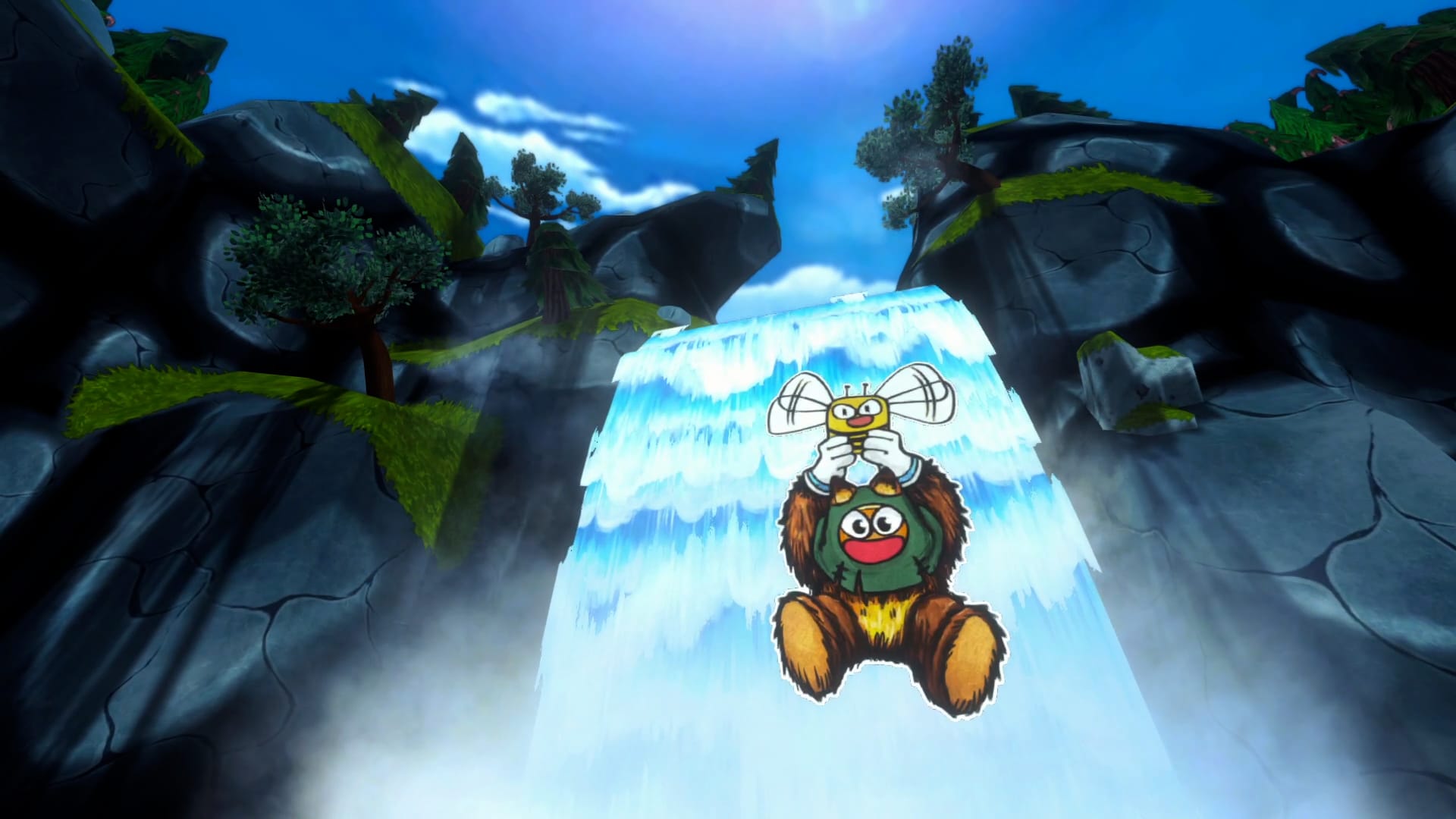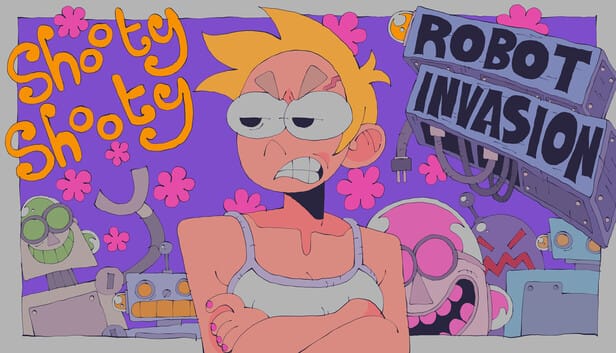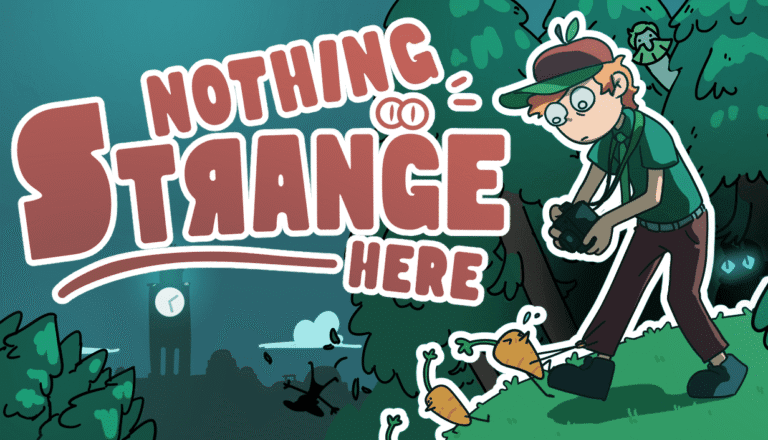
I’ll be honest—when “Ruffy and the Riverside” first landed in my inbox, accompanied by screenshots of what appeared to be a crayon-colored fever dream, my initial reaction was one of weary skepticism. Another indie platformer attempting to recapture the magic of Nintendo 64 classics? How many times have we seen this story end in mediocrity, with well-intentioned developers crafting hollow tributes that mistake nostalgia for innovation? The aesthetic didn’t help matters—those thick marker strokes and deliberately childlike character designs seemed to scream “shovelware” to my jaded gamer’s eye.
How spectacularly wrong I was.
The Revelation: When Paper Becomes Profound
What Zockrates Laboratories has accomplished with their debut effort transcends the simple alchemy of nostalgia and innovation. They’ve created something rarer and more precious—a game that understands the fundamental poetry of interactive play. Ruffy and the Riverside doesn’t just borrow from the classics; it builds upon their foundational wisdom while crafting its own unique voice, one that speaks in the universal language of joy, discovery, and creative problem-solving.
The game’s central conceit—the SWAP mechanic that allows protagonist Ruffy to copy and paste environmental textures—initially struck me as a clever gimmick. Copy some vines, paste them over a waterfall, create a climbable surface. Simple enough. But as I progressed through Riverside’s increasingly complex puzzles and environments, I began to realize that SWAP represents something far more sophisticated than a mere gameplay mechanic. It’s a metaphor for creativity itself, for the way imagination can reshape our perception of seemingly insurmountable obstacles.
Consider an early puzzle that had me staring at my screen for twenty minutes, stumped by what appeared to be an impossible chasm. The solution, when it finally dawned on me, was so elegantly simple it felt like discovering fire. Transform the water below into lava, causing the wooden bridge supports to burn and collapse, lowering the drawbridge to a crossable height. It’s a moment that encapsulates everything brilliant about Ruffy’s design philosophy—lateral thinking rewarded, creativity celebrated, and the very fabric of the game world treated as a malleable canvas for player expression.
Narrative Depth Disguised as Whimsy
The story of Ruffy and the Riverside unfolds with the deceptive simplicity of a children’s fairy tale, yet beneath its marker-drawn surface lies a surprisingly sophisticated exploration of identity, belonging, and environmental stewardship. Our titular hero, a bear of mysterious origins discovered as a child and raised by the wise mole Sir Eddler, finds himself thrust into the role of “Chosen One” when the mechanical menace Groll threatens to drain the life force from Riverside itself.
The genius of the narrative lies not in its destination—saving the world from an obvious villain—but in its journey. Each of the six letters that spell “RIVERSIDE” (cleverly scattered across distinct biomes and serving as both collectibles and progress markers) represents a different facet of what makes a community worth saving. The J (wait, that’s not right—R-I-V-E-R-S-I-D-E, forgive my late-night mathematics) teaches us about tradition and memory, the I about individual expression within collective harmony, and so forth.
What elevates this beyond simple morality play territory is the game’s willingness to interrogate its own tropes. Ruffy doesn’t blindly accept his “chosen one” status; he questions it, grows into it, and ultimately transforms it into something earned rather than inherited. The relationship between Ruffy and his bee companion Pip serves as the emotional anchor for this character development—their banter reveals depths of friendship that would make Banjo and Kazooie proud, while their collaborative mechanics (Pip enables Ruffy’s gliding ability) demonstrate how strength emerges from interdependence rather than individual prowess.
The environmental themes woven throughout the narrative feel urgent without being preachy. Groll’s mechanical invasion of natural spaces, the emphasis on restoration over destruction, and the way different biomes must be understood and respected rather than conquered—these elements coalesce into a worldview that feels both timeless and desperately contemporary.
Mechanical Mastery in Motion
From a pure gameplay perspective, Ruffy and the Riverside achieves something that countless bigger-budget productions have failed to accomplish—it makes every single mechanic feel essential and interconnected. The SWAP ability doesn’t exist in isolation; it’s the keystone that supports an entire architecture of movement, puzzle-solving, and world interaction.

The platforming itself deserves particular praise for its accessibility without sacrificing depth. Ruffy’s movement set—running, jumping, climbing, gliding with Pip’s assistance, and his Crash Bandicoot-inspired spin attack—feels immediately familiar to anyone who grew up with 3D platformers, yet each ability has been refined and polished to near-perfection. The responsiveness of the controls cannot be overstated; there’s a tactile satisfaction to Ruffy’s movements that makes simply traversing the world a pleasure in itself.
But it’s in the integration of SWAP with traditional platforming that the game truly shines. Need to reach a high platform? You could look for a conventional path, or you could transform a nearby pool into ice, creating a slippery surface that launches you higher when you slide across it. Facing a room full of toxic gas? Transform the walls into wood and watch them burn away, clearing the air. The game consistently rewards creative thinking while never making the “correct” solution feel obvious or inevitable.
The variety of materials available for swapping creates a chemistry set of possibilities. Metal conducts electricity and attracts magnets. Wood floats and burns. Ice creates slippery surfaces. Lava burns through barriers. Each material follows logical rules, and mastering these rules becomes an integral part of progression. The game respects your intelligence, trusting you to experiment and learn through play rather than through exposition.
A Visual Love Letter to Imagination
The decision to render characters as hand-drawn 2D sprites moving through three-dimensional environments could have been a disaster in less capable hands. Instead, Zockrates Laboratories has created one of the most visually distinctive games I’ve encountered in years. The thick marker strokes that initially put me off reveal themselves as a deliberate aesthetic choice that serves both practical and emotional purposes.
Practically, the 2D characters create clear visual hierarchy—friendly NPCs immediately distinguish themselves from 3D environmental enemies, creating an intuitive friend-or-foe identification system. Emotionally, the hand-drawn aesthetic evokes the wonder of childhood creativity, when stories could be brought to life with nothing more than paper, markers, and imagination.

The environments themselves showcase impressive technical artistry disguised as simplicity. Each of the game’s six major biomes—from sun-drenched beaches to mysterious graveyards—feels meticulously crafted, with hidden details rewarding careful exploration. The way light filters through forest canopies, the subtle animation of water effects, the satisfying particle systems when materials are swapped—these technical achievements serve the greater goal of creating a world that feels alive and reactive to player agency.
The seamless blending of 2D and 3D elements reaches its peak during the game’s “chalk world” sequences—surreal 2D platforming gauntlets hidden within the main adventure. These segments feel like diving into a child’s sketch pad, complete with rough borders and deliberate imperfections that somehow make them more beautiful than photorealistic alternatives.
Sonic Landscapes of Pure Joy
If Ruffy and the Riverside has an unsung hero, it’s the soundtrack composed by the game’s audio team. Drawing clear inspiration from the percussion-heavy, upbeat compositions of Donkey Kong 64 while filtering them through a contemporary lo-fi aesthetic, the music serves as both accompaniment and active participant in the gameplay experience.
Each biome receives its own musical identity that perfectly complements its visual design and puzzle mechanics. The forest area’s theme layers organic percussion with synthetic elements, creating an audio representation of the natural-meets-mechanical themes that run throughout the game. The graveyard sequence features haunting melodies that somehow manage to be spooky without being scary, maintaining the game’s all-ages appeal while acknowledging the more serious themes of memory and loss.
The technical implementation of the audio design deserves recognition as well. Music dynamically responds to player actions—the melody might shift when you successfully solve a puzzle, or percussion elements might drop out during quiet exploration moments. These subtle shifts create a sense of musical collaboration between player and game, making your actions feel like they’re contributing to an ongoing composition.
Sound effects, too, demonstrate exceptional attention to detail. The satisfying thunk when Ruffy’s spin attack connects with a destructible object, the gentle whoosh of wind during gliding sequences, the distinctive audio signatures for different SWAP materials—each sound serves both feedback and immersion purposes.
Standing Among Giants
Comparisons to genre classics feel inevitable when discussing Ruffy and the Riverside, but they risk diminishing what makes this game unique. Yes, you’ll see DNA from Banjo-Kazooie in the collect-a-thon structure and character partnership dynamics. Yes, the 2D-meets-3D aesthetic recalls Paper Mario’s innovative visual design. Yes, the SWAP mechanic bears some resemblance to Super Mario Odyssey’s possession abilities.

But influence and imitation are different beasts entirely. Where lesser games might content themselves with surface-level references and borrowed mechanics, Ruffy and the Riverside demonstrates a deep understanding of what made those classics resonate. It’s not enough to have collectibles scattered throughout your world—those collectibles need to feel meaningful, connected to character progression and world understanding. It’s not enough to have a unique central mechanic—that mechanic needs to integrate seamlessly with every other system in your game.
The closest spiritual successor might be A Hat in Time, another indie platformer that managed to capture the essence of 3D platforming without falling into pure nostalgia. But where A Hat in Time excelled at refining existing formulas, Ruffy and the Riverside pushes the genre forward with genuinely innovative ideas. The SWAP mechanic alone represents the kind of creative breakthrough that major studios spend millions trying to discover.
Personal Transformation Through Play
I mentioned earlier that I’ve spent fifteen hours with this game, exceeding the typical ten-hour campaign length. This wasn’t due to professional obligation or completion anxiety—it was pure, undiluted joy in the act of exploration and discovery. There’s something deeply satisfying about wandering Riverside’s interconnected world, never quite sure what puzzle or character interaction awaits around the next corner.
The side quests deserve particular mention for avoiding the busy work that plagues so many modern games. Helping Veena collect her scattered Etoi creatures isn’t just about filling progress bars—it’s about understanding the interconnectedness of Riverside’s ecosystem. Racing hay bales isn’t just a mini-game distraction—it’s an opportunity to master advanced SWAP techniques while enjoying the game’s delightfully silly sense of humor.

I found myself developing genuine emotional connections to Riverside’s eccentric cast of characters. The butterfly-collecting fox Quintus who shares nature facts with infectious enthusiasm. The Fish Gang’s chaotic energy and their surprisingly complex underwater dance competitions. The wise old crows who speak in riddles that actually provide meaningful guidance rather than cryptic frustration.
These relationships matter because they’re built through interaction rather than exposition. You don’t read about Quintus’s love of butterflies—you experience it by bringing him specimens and watching his animated reactions. You don’t learn about the Fish Gang’s territorial disputes through dialogue trees—you participate in their aquatic conflicts and help mediate their solutions.
Technical Excellence Hidden in Plain Sight
For a debut effort from a small German studio, the technical achievement represented by Ruffy and the Riverside is nothing short of remarkable.
The seamless world design deserves particular recognition. Riverside feels like a coherent, interconnected space rather than a collection of discrete levels. The way different biomes connect naturally, with each transition feeling geographically logical, creates a sense of place that many larger productions fail to achieve. The decision to hide loading behind brief transition effects rather than loading screens maintains immersion and encourages exploration.
More impressive still is how the SWAP mechanic integrates with the game’s physics system. Each material type behaves according to consistent rules, even when applied in unexpected combinations. The fact that the game allows for creative “cheating”—using SWAP to manipulate race conditions or puzzle solutions in unintended ways—suggests a robust underlying system that can handle player creativity without breaking.
The user interface earns praise for its clarity and accessibility. Important information is clearly communicated without cluttering the screen, and the SWAP targeting system provides precise control without being finicky. Even complex multi-target SWAP operations feel intuitive after the brief learning curve.
Beyond the substantial main campaign, Ruffy and the Riverside offers numerous incentives for extended play. The collectible systems—from Etoi creatures to butterfly specimens to hidden gems—provide structure for completionist players without feeling overwhelming. More importantly, the Pattern Stones system allows for genuine customization of the game world, letting players modify environmental textures to create personalized versions of Riverside.
The environmental editing tools represent a stroke of genius in terms of replayability. Want to turn all the water purple and the grass pink? The game not only allows this but celebrates it, treating player creativity as an extension of Ruffy’s own reality-altering abilities. The fact that these modifications can be toggled on and off at will removes any fear of “breaking” the experience.
The multiple solution paths for many puzzles encourage experimentation across multiple playthroughs. Once you understand the full range of SWAP possibilities, returning to earlier areas often reveals new approaches you didn’t consider during your first encounter. This organic discovery system feels more rewarding than traditional New Game+ features because it emerges from genuine system mastery rather than arbitrary unlocks.
A Call to Adventure
As I prepare to close this review—far longer than my usual efforts, but this game demanded nothing less than complete emotional honesty—I find myself struggling with the same challenge that faces any critic attempting to convey the magic of interactive entertainment. How do you capture in words the moment when a player’s understanding suddenly expands, when they realize they can solve problems in ways the developers never explicitly taught them? How do you communicate the pure joy of discovery, the satisfaction of creative problem-solving, the gentle warmth of a world designed with love and care?

Ruffy and the Riverside exists in that rare category of games that remind us why we fell in love with this medium in the first place. It’s a game that trusts its players, respects their intelligence, and rewards their creativity. It’s a game that understands the difference between difficulty and complexity, between challenge and frustration. It’s a game that proves innovation doesn’t require massive budgets or cutting-edge technology—sometimes it just requires imagination, passion, and a deep understanding of what makes play meaningful.
In an industry increasingly dominated by live services, battle passes, and engagement metrics, Ruffy and the Riverside stands as a defiant celebration of single-player creativity and joy. It’s a reminder that games can be art without being pretentious, accessible without being shallow, nostalgic without being derivative.
To those of you still skeptical, still seeing only marker-drawn bears and childish whimsy, I implore you to look deeper. Give Ruffy and the Riverside the chance I almost didn’t give it. Let it surprise you, challenge you, and ultimately transform your understanding of what modern platformers can achieve.
This isn’t just one of the best indie games of the year—it’s one of the best games of the year, period. Zockrates Laboratories has announced their arrival as a developer to watch with a debut that establishes them as inheritors of the 3D platforming tradition and pioneers of its future evolution.
The magic is real. The joy is infectious. The experience is transformative.
Welcome to Riverside. Leave your skepticism at the door.
PROS:
- Revolutionary SWAP mechanic that transforms traditional platforming into creative problem-solving.
- Stunning visual aesthetic that perfectly blends 2D hand-drawn characters with 3D environments.
- Exceptional world design with seamless interconnected biomes and meaningful exploration.
- Outstanding soundtrack that dynamically responds to gameplay and enhances emotional connection.
- Brilliant puzzle design that rewards creativity and lateral thinking without frustrating players.
- Memorable character cast with genuine personality and meaningful interactions.
- Substantial content with 10+ hours of main story and extensive replay value through collectibles and customization.
- Innovative environmental editing that allows players to personalize their experience.
CONS:
- Occasional pacing issues in early hours with some fetch quest elements.
- Limited enemy variety with only a handful of creature types and basic boss encounters.
- Inconsistent puzzle complexity with some solutions feeling too obvious while others lack clear direction.
- Minor performance hiccups during world transitions.
Score: 4.25/5
Ruffy and the Riverside is available now on PC, PlayStation, Xbox, and Nintendo Switch. Game was reviewewd on PC. Review code provided by Phiphen Games.


